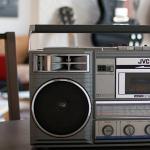» Ground clamp
The list of basic devices required for manual electric arc welding includes the following items: electrode holder; welding cable to holder; return cable; ground terminal (ground clamp).
Quite often these components are not of high quality and require immediate replacement. There are times when the contractor will need a replacement after a short period of use.
Important! If the welding work clamp is faulty, this negatively affects the work process, its productivity, and most importantly, safety for the welder, the stability of the arc, and the quality of the connection.

Choice of any technical device or adaptation requires careful and careful approach. A correctly selected ground terminal can protect the performer from electric shock and will guarantee a high-quality and reliable connection. To select the optimal welding work clamp, you should pay attention to the following important aspects.
- You have to choose well-known and trusted brands, which will help you avoid purchasing counterfeit products. It is very difficult for a person who does not have sufficient experience to distinguish a fake from an original product. Therefore, you need to buy products only from specialized sellers and suppliers.
- The ground clamp for the welding machine should be selected taking into account maximum current, which the unit produces.
- Also the clamp should confidently withstand the weight of the connected cable.
- If the compression mechanism is spring, then its properties should be sufficient for reliable contact with the work product.
- Plays one of the main roles opening angle terminals, the value of which should be sufficient for secure attachment to parts various sizes .
Types of ground clamps
Ground clamps for welding machines, depending on the nature of the fixation, can be of several types. Next, we will look at the main types of clamps, as well as their advantages and disadvantages.
1. W welding mass pressure “crocodile”
 Most often, performers use a type clamp for grounding "crocodile" ("clothespin"), which is attached directly to the part.
Most often, performers use a type clamp for grounding "crocodile" ("clothespin"), which is attached directly to the part.
Advantages:
- reliability of connection with the surface of the part;
- convenience and speed of use;
- minimum connection resistance;
- the ability to fix parts of various geometric shape, including complex configurations;
- high degree of disclosure.
It is also worth highlighting the main flaws:
- low, compared to other types, level of strength of some components - spring;
- This type of clamp is used only in cases where it is possible to attach directly to the product.
The alligator clip must be selected based on general recommendations. Terminals of this type are available in three main modifications: ground clamp 300A, 200A and 500A. Depending on the model of the welding machine and the current it produces, you need to determine the optimal modification. To carry out work on professional level It is recommended to purchase a 400-500A clamp.
Important! It should be noted that the use of a clothespin clamp when welding pipes large diameter impossible.
Useful video
2. Magnetic mass for welding
Welders quite often use magnetic ground clamp. This type has a whole spectrum advantages:
- possibility to secure a contact on any surface or structure, including pipes;
- simplicity of design ensures durability and trouble-free operation;
- absence of springs and other mechanisms also promotes long service life;
- a ground magnet for welding is able to withstand voltage surges and not burn out;
- successfully used in hard-to-reach places;
- The large contact area guarantees secure fastening.
Flaws:
- Not reliable fastening contact on small-area parts, for example, fittings;
- impossibility of attaching the clamp to the product from colored metals;
- a magnet is needed periodically cleanse, in particular from metal shavings;
- should Avoid overheating the magnet, otherwise it may demagnetize; Overheating occurs if the terminal is attached to a dirty surface.
 3. Clamp
3. Clamp
Welding Ground Clamps Type clamp are used less frequently than the two types listed above. This type of terminal also has several advantages:
- high degree of fastening reliability, since fixation is carried out using a hex head screw;
- good contact with the workpiece ensures a smooth transition of current.
As shortcomings One can highlight the rather complex structure of the mechanism and the relatively large dimensions of the terminal.
4. Centralizer
In rare cases, experts select a centralizer-type clamp, designed for centering and tacking pipes previously located in the desired position. Can also be used to connect welding parts.
Advantages of this type:
- ensuring tight contact;
- guarantees welding accuracy;
- Suitable for pipes of various diameters.
Flaws:
- limited scope;
- high cost compared to other types of clamps.

Useful video
And another review from an experienced welder, which has some tricks.
Popular models
Let's look at popular welding clamps masses. On the market for sale consumables There is a wide variety of work clamps for welding, both domestic and foreign. Next we will look at the most popular models.

Ground clamp Ergus 300A Pro, manufacturer - Quattro Elementi (Italy). Characteristics: crocodile type; affordable price; high quality; light weight; supports current up to 300A, which is perfect for the home craftsman.

Ground clamp Skrab 27621 300A(in the picture), made in Italy. Is one of the most optimal options for work at home.

Popular grounding terminals are the models Russian manufacturer « Cord". The Moscow company offers clamps with different types mechanism.
To perform welding work in industrial or production conditions It is recommended to choose a mass clamp of 500A or more.

Elitech 500A mass clamp, made in China.
Important! It should be noted that almost all manufacturers and sellers of welding equipment also offer customers grounding terminals. Therefore, a wide selection of mechanisms is available to beginners and professional welders.
Do-it-yourself welding compound
For those who want to create a clamp with my own hands To save money, we suggest you read the instructions.
Magnetic mass for welding is, if not the most common, then the most desirable, so the process of its manufacture will be shown below.
The process is simple, you will need a minimum of tools, and the parts can be at hand.
The performer will need: magnet; two washers the size of the magnet can be made from sheet metal; bolt and nut for clamping the welding cable.
The welding mass holder is assembled in several stages:
- At the washer, which will serve as a contact, a hole is drilled corresponding to the diameter of the bolt head;
- the top of the bolt must be ground down to the thickness of the washer;
- then this structure is welded and cleaned; you should get a mushroom-shaped part with a carved stem;
- the magnet is placed on the bolt, with a second washer on top;
When purchasing a welding machine, the following accessories are usually included with it:
- electrode holder,
- welding cable to it;
- return cable,
- ground terminal.
If the purchased inverter power source (today almost no one uses transformers for welding) is designed for household work, then in most cases all these components require immediate replacement. Especially when it comes to Chinese welding machines, whose presence on the welding equipment market today is about 98%, although managers (unscrupulous sellers) are trying to sell them as Italian, Czech, Danish, French and the like.
If replacement does not occur immediately, it will definitely be required after a short period of operation. Usually, the inverter is equipped with a KV-200 electrode holder for free, which costs $3 (imagine the price the manufacturer sells it for), respectively, this is an economical version and they save on the materials used for manufacturing. This applies to live parts, usually made of metal coated with brass or copper, or low-quality plastic. For welding from time to time in everyday life, the KV-200 can serve for a long time, however, under more intense conditions (for example, if you want to cut holes in metal with an electrode) or simply during prolonged welding, it will overheat and literally fall apart. But over time, even with gentle use, the spring that clamps the jaws of the holder weakens and does not hold the electrode firmly; it begins to wobble. This has a negative effect on the stability of the arc and affects the quality welds, but, most importantly, it affects the welder’s nerves.
The cable usually also leaves a lot to be desired: it is short, and galvanized aluminum is used instead of a copper core.
The same applies to the ground terminal. During intensive welding, it will most likely burn out; over time, the spring and, accordingly, the contact weaken. This can also happen due to corrosion. metal jaws, which need to be constantly cleaned to a shine.
How to choose a good mass if the old one has become unusable for some reason or you initially decided not to use it (due to poor quality)?
Choose brands that already have an established positive reputation. In fact, you are not insured against counterfeit products, which non-specialists cannot distinguish from the original ones. Buy from specialized stores with an established reputation.
The weight should be selected taking into account the maximum welding current of your machine and confidently support the weight of the connected welding cable. If a spring is used as the main “compressive body” in the mass, its spring properties must be sufficient to provide the force necessary to achieve reliable contact with the product. The key role is played by the opening size of the terminal, which should be sufficient for reliable fastening to products of various sizes (including large ones).
Based on design features and the nature of fixation, grounding terminals are divided into several types:
- Clamp
- Clothespin clip
- Magnetic terminal
Each has its own advantages and disadvantages. The clamp guarantees reliable “iron” contact, because it is fixed rigidly with a screw. “Clothespin” is most widespread due to its quick fixation even on products of complex geometric shapes. It is most convenient to use magnetic mass where the previous two do not work: for example, when welding large-diameter pipes.
Depending on the nature of the work ahead, choose which mass design will be optimal for you.
Recommendations for the selection and operation of a “Clothespin” (or “Crocodile”) type ground terminal
As already mentioned, most often in everyday life they use a mass clamp, which looks similar to an ordinary household clothespin for fixing laundry, only many times enlarged. Therefore, we will talk about it in detail in the final part of our article.
Such a mass often fails due to incorrect operation. Knowing how a clothespin works will help extend its life. Please note that on any “clothespin” there is a copper, copper-plated or brass bus that transmits electrical contact from the first clamping jaw to the second. The connected metal of the product you plan to weld should not touch the busbar. Constant contact with the tire will damage it. Options for correct and incorrect connection are shown in the photo.

Wrong

Right
The spring allows you to fix the “clothespin” on the product. However, a problem often occurs when the contact that fits with a wire to one clamping jaw slips through the spring to the other. The spring begins to heat up and loses its hardness and rigidity, as a result, the springing properties weaken - the ground terminal becomes completely inoperable.
If you want to buy a good “clothespin” for welding, buy one designed for professional work with a reserve of 400...500A. Which design features have similar products:
- Powerful spring capable of providing truly reliable contact;
- A large degree of disclosure is sometimes very helpful;
- The copper busbar in such “clothespins” is placed in such a way that physical-electrical contact with it is impossible.
Ground terminals
Ground terminal(or, otherwise, ground clamp) - a key device for welding: electric arc or semi-automatic. Grounding terminals come in several types. Their characteristics differ depending on the parameters of the welding itself.
What type ground terminals Under what conditions is it more convenient? What characteristics does the choice of this device depend on?
GROUND CLAMP: ROLE IN WELDING
Ground clamp- a device made of various metals that provides connection, on the one hand, to the power source and, on the other hand, to the part being welded.
Regardless of whether it is electric arc welding or semi-automatic, a grounding terminal is needed to ensure that a potential difference is ensured in the welding area.
The terminal must be connected to the power source - into one of the welding sockets on the power source panel.
Which socket should the terminal be connected to, and which should the cable going to the electrode be connected to, depends on a number of parameters. For example, on the type of electrode (for manual arc welding) or on what the power source is - a rectifier or transformer. In the latter case, it does not matter which of the two corresponding sockets is connected to.
Ground clamp then attached to the part being welded or to metal surface, with which the part comes into contact or on which it is located. Thus, the part being welded ends up with a potential of one polarity, and the electrode supplied to it ends up with a potential of another polarity.
SIGNIFICANT CHARACTERISTICS OF THE TERMINAL
There are several defining characteristics for ground terminals, which you should pay attention to when choosing a device. This:
Clamping force.
opening width.
withstand current.
Clamping force- this is how tightly the terminal is attached to the part. If it is not strong enough, it may not support the weight of the welding cable and the welding connection will break.
Opening width(for clamp-type terminals, see below) is measured in millimeters and shows how thick a plate the terminal can hook onto.
Withstand current- a characteristic that is of primary importance for welding work. What current the terminal can withstand, we can carry out welding work at this current. You need to clearly know for what welding work the grounding terminal is purchased so as not to make a mistake with the amount of current the terminal can withstand.
WHAT DOES TERMINALS DAMAGE?
Ground clamp may overheat. The cable insulation melts, the cable burns out, and the surface on which the terminal is attached oxidizes. As a result, the contact between the terminal (and therefore the current supplied through the cable) and the surface (part) deteriorates.
What causes this?
First of all, due to the fact that the place where the terminal is attached may be covered in paint or dirty.
Also, due to insufficient contact of the cable with the terminal - at the attachment point.
The third reason is the poor quality of the terminal itself. If the terminal is made of iron and coated with copper, then the copper layer can wear out, burn out and thus become insufficient.
Another reason for terminal damage is due to the lack of a protective busbar (made of copper) in the terminal. The bus connects the ends of the terminal jaws. If any of the two jaws (in crocodile type terminals, see below) has unreliable contact with the surface, current flows through the bus. But if there is no bus, then the current can flow through the center of the terminal, where the spring is located, and the terminal will deteriorate.
WHAT ARE THERE?
The following common types of ground clamps are available:
clamp terminals("crocodile" type) - are used where it is possible to grab the surface plate (if this is not possible, sometimes a rod is specially welded to which the terminal is attached).
magnetic - used in hard-to-reach places or where it is not possible to grab the plate with a clamp terminal (for example, when working with pipes).
Peculiarity magnetic clamps is that it is necessary to avoid overheating them, because the clamp is demagnetized. Overheating in in this case often happens where the magnetic terminal is attached to a heavily soiled surface and the contact is insufficient.
SUMMARY
The grounding terminal should be selected based on:
Firstly, from its mechanical characteristics (how wide the alligator clip opens, how tight the clamp provides).
secondly, from the current required for welding work, which is indicated in the characteristics of the terminal.
If the terminal is magnetic, pay attention to the absence of dirt and other foreign objects in the contact area between the clamp and the surface.
If ground terminal together with the corresponding connected welding cable is included in the kit - then there are no questions with the choice of terminal. However, if you choose a mass clamp for any special type of welding work (“assemble.” welding equipment for the required welding process), then the current carried by the terminal should be paid attention first.
Reading time: 2 minutes
Magnetic terminal, magnet clamp, magnetic contact of the welding cable... This device has many names. But the essence is always the same: a magnet allows you to quickly and reliably attach it to the ground and start welding.
But what is it? What are the pros and cons of a magnetic ground terminal? How to use it and is it worth buying at all? You will find the answer to these and some other questions in our article.
The magnetic contact of a welding cable is a device that is mounted on the surface to be welded (ground) using an active magnetic field. The device is necessary to form a closed electrical circuit. Without this, manual arc welding is impossible.
The magnetic ground clamp is very popular among both beginners and professional welders. Magnetic mass is also often used for DIY welding at home. It quickly and securely attaches to any surface, even curved ones.
Advantages and disadvantages
We have already mentioned several advantages of a magnetic terminal above. But the list doesn’t end there. The magnetic terminal has simple design, so it is extremely durable and lasts for many years. Simply put, it is a regular magnet with a switchable or permanent magnetic field. There are no springs or anything else mechanical elements which may fail.
The magnetic terminal tolerates temperature and voltage changes well. It rarely burns out and can work with most types of metals. Also, such a ground clamp is indispensable when welding in hard to reach place. Even if the part is bent, the magnet will still provide reliable fastening due to its large contact area.

But it was not without its drawbacks. So the magnetic terminal is not able to provide reliable fastening to small parts. For example, on fittings. To maintain an active magnetic field, the device must be constantly cleaned. Its operation is very badly affected by metal shavings.
Also, to use a magnet, preliminary preparation is required. If you attach a magnet to uncleaned metal, the device will stop working.
Don't forget that there are metals that are not magnetic. These are most non-ferrous metals. You won't be able to use a magnetic terminal with them.
How to use?
There is nothing complicated about using a magnetic terminal. Most models have a special handle, turning which you turn on the magnetic field. By default, the magnet will not attach to metal.
The device must be attached to the part, holding it with one hand. With your other hand, turn the handle, activating the magnetic field. Everything is ready! The magnet holds securely on the metal. To remove the device, simply turn the handle in the opposite direction. There is no need to put any effort into tearing the magnet off the metal.
Is it worth buying?
The answer to this question depends on the specifics of your welding work. You must evaluate for yourself which metals you cook most often and under what conditions. If you are a beginner and do not weld non-ferrous metals, then a magnetic terminal will simplify your work. The same applies to professional craftsmen. But they most likely have a whole set of different terminals for welding any metals.
The magnetic terminal is not cheap (compared to other types of clamps), but it is worth it. If you want to save money, you can make such a terminal yourself. Below is a video that shows how to make a magnetic mass for welding on your own.




